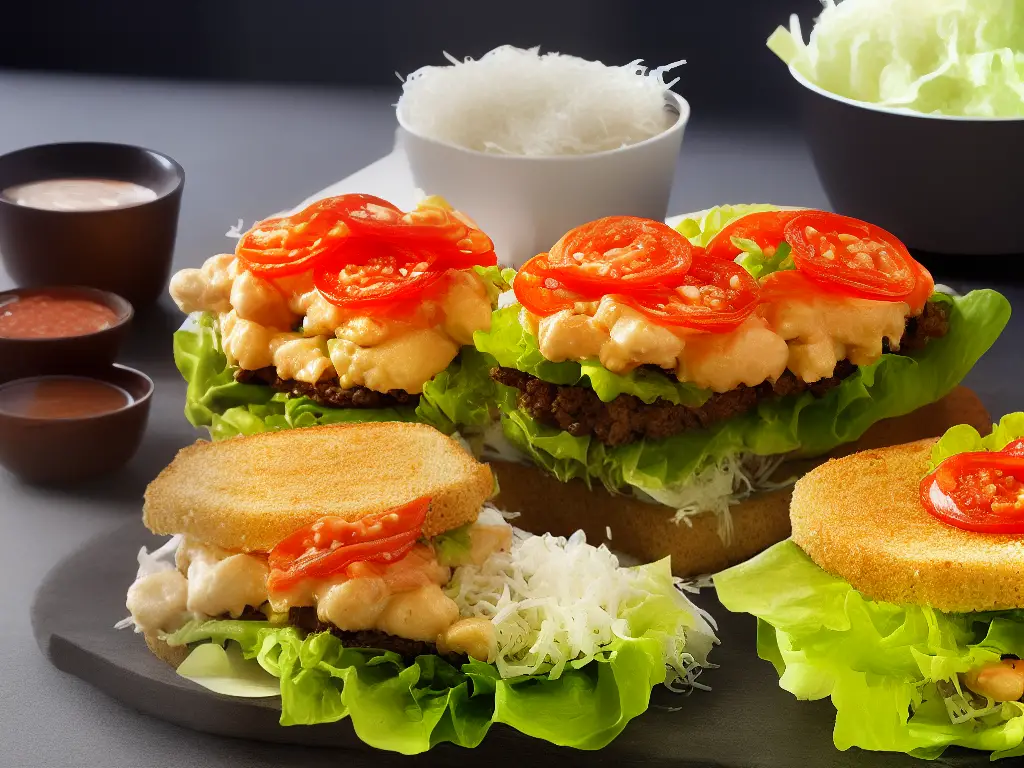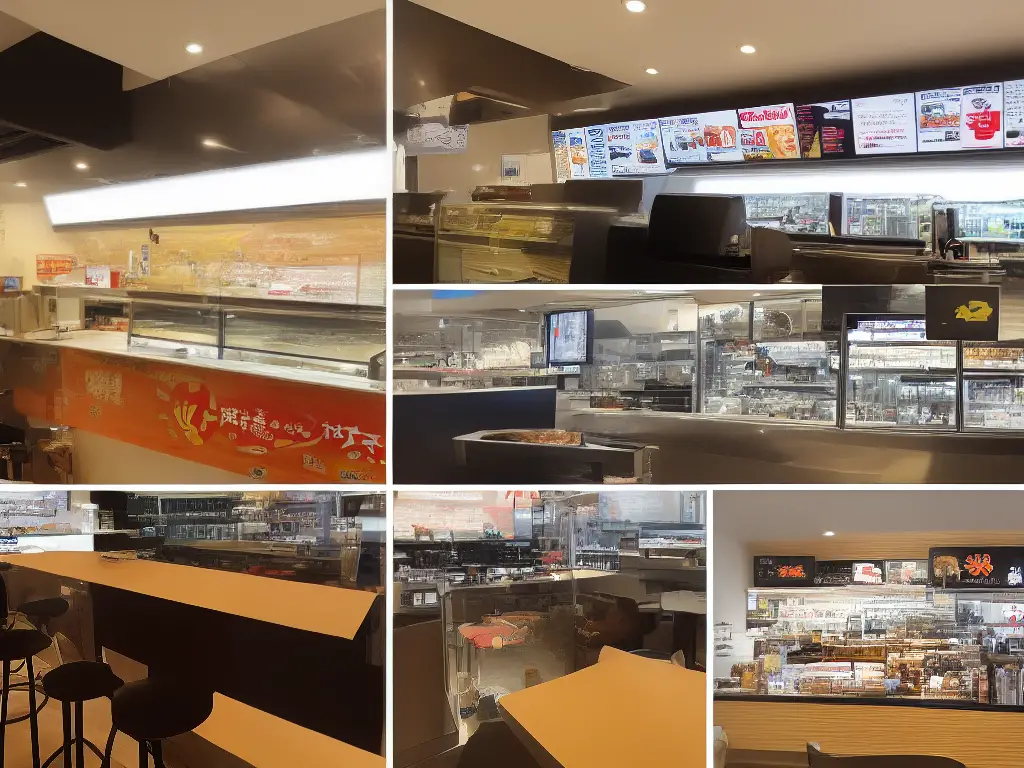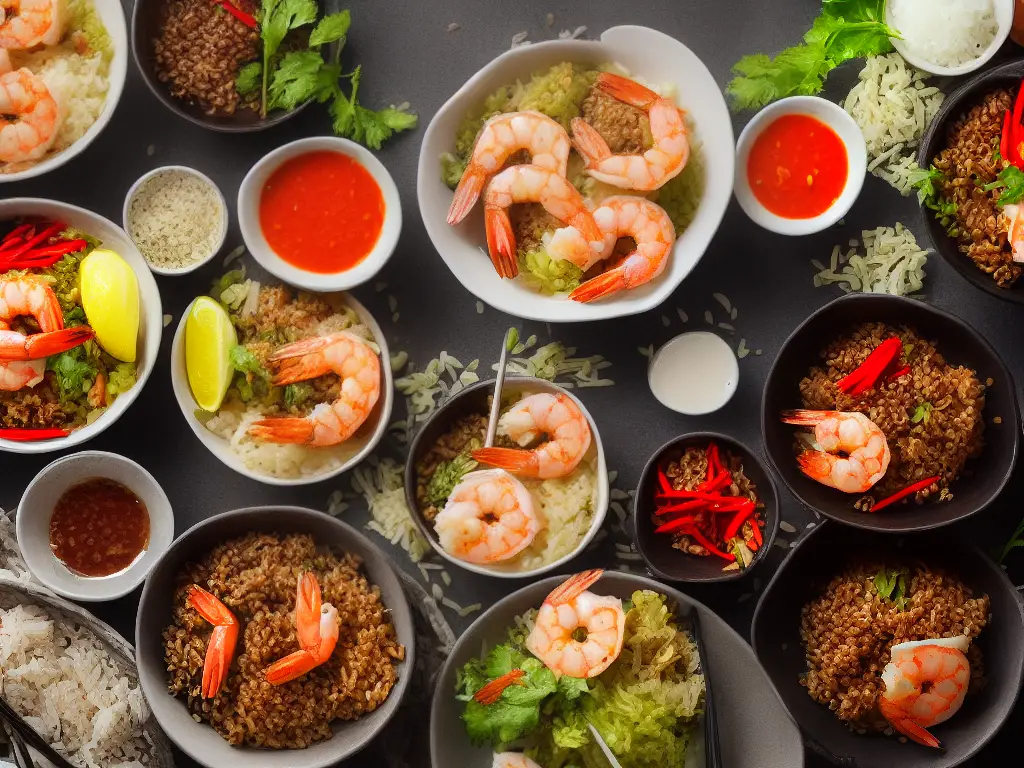In the ever-adapting world of fast food, McDonald’s has found success in incorporating local flavors and preferences into their menus across the globe. One notable example is McShrimp, the unique offering available only in McDonald’s Japan that has become a symbol of the fusion of Western and Japanese culinary cultures. This enticing journey into McShrimp’s history, cultural significance, and marketing strategies unravels the fascinating story behind this popular item and its impact on the Japanese fast food landscape.
History of McShrimp Japan
The McShrimp, known as Ebi Filet-O in Japan, was first introduced to the Japanese market in 2005 by McDonald’s Japan. The idea behind this new menu item was to cater to the local taste preferences of the country while also offering a unique alternative to their classic burger menu. Shrimp, or ebi in Japanese, plays an essential role in Japanese cuisine and is one of the most popular seafood options.
The popularity of McShrimp in Japan can be attributed to several factors. One primary reason is the cultural significance of shrimp in Japanese cuisine, featuring in many popular dishes such as sushi, tempura, and onigiri. Additionally, the taste and quality of the McShrimp, with its panko-breadcrumb coating and tender shrimp filling, have resonated well with Japanese consumers. The McShrimp also appeals to those who do not typically enjoy McDonald’s beef or chicken options, thus expanding its customer base.
McDonald’s Japan has continually worked to maintain the popularity of the McShrimp by offering limited-time promotions and variations of the Ebi Filet-O. In 2013, McDonald’s Japan launched a limited-time offering called the ‘Ebi Filet-O Shrimp Burger Set,’ which included a double shrimp patty burger, shrimp nugget side dish, and a shrimp-flavored dipping sauce. This promotion generated excitement among consumers and increased demand for the McShrimp. Furthermore, McDonald’s occasionally collaborates with other well-known brands to create unique McShrimp menu items.
McDonald’s Japan has successfully integrated the McShrimp into its broader menu offerings, making it an integral part of their lineup. The McShrimp burger is often paired with other seafood options, such as the Filet-O-Fish, to offer meal bundle promotions for seafood lovers. Additionally, the Ebi Filet-O has become a popular choice for seasonal or special event menus, such as the Sakura-themed menu, a menu dedicated to the Japanese cherry blossom season.
The McShrimp, or Ebi Filet-O, is a popular menu item at McDonald’s Japan that distinguishes itself from other offerings due to its unique combination of ingredients and preparation methods. While the typical McDonald’s Filet-O is made with fish, the McShrimp features a breaded shrimp patty that provides a delicious alternative for seafood lovers. Japanese cuisine is known for its emphasis on fresh, high-quality seafood, and the McShrimp is no exception, showcasing the nation’s culinary preferences.
![]()
Ingredients and Preparation
Not only has McDonald’s Japan found success with the original McShrimp, but they have also introduced various Ebi Filet-O items, such as the Ebi Filet-O Tarter and the Ebi Filet-O Spicy Sand. These items feature different toppings and flavors designed to cater to different preferences and taste buds, further ensuring the longevity of the product. The McShrimp’s continued success and status as a fan favorite demonstrate McDonald’s Japan’s ability to effectively adapt to local tastes and preferences, making it an excellent example of the company’s global versatility.
One of the key ingredients of the McShrimp is the shrimp patty that is made with a mix of minced shrimp meat and breadcrumbs. This patty is then breaded with panko – a type of light, crispy, Japanese breadcrumb – before being deep-fried to achieve a crunchy exterior while maintaining the juicy tenderness of the shrimp inside. The use of panko sets the McShrimp apart from other McDonald’s products, as it contributes to a flakier, crispier texture that is distinctively Japanese.
Accompanying the panko-breaded shrimp patty is a zesty sauce that adds a burst of flavor to the McShrimp. The sauce is made with a blend of spices, vinegar, and mayonnaise, giving it a tangy, creamy taste that complements the rich seafood flavors in the patty. This sauce enhances the dining experience, setting the McShrimp apart from other traditional McDonald’s offerings that focus on ketchup or tartar sauce as condiments.
In addition to the shrimp patty and special sauce, the McShrimp is assembled with the same lettuce and fresh buns used in other McDonald’s sandwiches, allowing the unique flavors of the shrimp patty and creamy sauce to shine. The familiar bread and lettuce components, however, keep the McShrimp in line with the classic McDonald’s look and feel, making this sandwich an enticing option for adventurous diners who still value consistency.
The attention to detail and use of local ingredients in McShrimp Japan illustrates McDonald’s dedication to catering to regional tastes while maintaining the core experience of the popular fast-food brand. The panko-battered shrimp patty, combined with the tangy, creamy sauce, creates a memorable sandwich that highlights the importance of incorporating regional food trends and preferences into fast-food menus to continuously engage and excite its diverse audience.

Cultural Significance
Highlighting the fusion of Western and Japanese culinary traditions, the McShrimp has become a unique, popular snack among Japanese fast-food enthusiasts. Japan’s deep love for seafood, particularly shrimp, is unmistakable. By introducing the McShrimp to their Japanese menu, McDonald’s demonstrates its commitment to adapting to the local palate, ensuring the global brand continues to offer familiarity and appeal to a diverse customer base.
In Japan, seafood is an essential element of the traditional culinary culture. Shrimp is often used in various Japanese dishes, such as tempura, sushi, and ebi furai (fried shrimp). The popularity of these items is a clear indication of the nation’s preference for seafood, and McDonald’s decision to include shrimp in their menu seems natural. By doing so, McDonald’s Japan ensures that it remains relevant to the local market while still adhering to the company’s global brand identity. The McShrimp is a testament to the importance of cultural understanding and adaptation in the highly competitive world of fast food.
The success of the McShrimp in Japan also highlights the country’s openness to trying new culinary experiences. The Japanese are known for their discerning tastes, and their willingness to embrace the McShrimp shows a genuine appreciation for the creative fusion of East and West gastronomy. This further establishes the McShrimp as an embodiment of the harmonious blend of both culinary cultures, while still retaining the comfort and familiarity of a McDonald’s meal.
Moreover, the McShrimp’s popularity is an indicator of the ever-changing contemporary Japanese culture, which is increasingly embracing Western influences. This evolution is visible not only in the world of food but also in fashion, music, and entertainment. The rise of international fast-food chains, prominent Western brands, and the general Westernization of Japanese culture all contribute to the receptiveness of the McShrimp’s presence.
The McShrimp, a unique menu item at McDonald’s Japan, embodies the convergence of diverse culinary worlds and the continuous evolution of Japanese culture. Its popularity and recognition highlight the effectiveness of deliberate cultural adaptation in an increasingly globalized culinary landscape. As cultures continue to merge and transform, delectable innovations like the McShrimp will persist in uniting people through a shared appreciation for both traditional and contemporary cuisine.

Marketing and Promotions Strategies
As part of its innovative and creative marketing approach, McDonald’s Japan focuses on capturing the attention of its target audience through products like the McShrimp, which caters specifically to the seafood-loving Japanese market. A crucial aspect of their marketing strategy was the creation of unique packaging for the McShrimp, differentiating it from traditional McDonald’s packaging. The design incorporates elements of Japanese culture, such as the ‘rising sun’ flag and the culturally-inspired typography spelling ‘McShrimp’, effectively blending the global and local elements associated with the dish.
Advertising campaigns played a crucial role in promoting McShrimp, and McDonald’s Japan didn’t shy away from using various media channels to reach their target audience. They utilized a mix of online and offline advertising – from social media platforms such as Facebook, Twitter, and YouTube, to billboards, print ads, and television commercials. The advertisements focused on emphasizing the exclusive availability of McShrimp in Japan, catering to the appetites of their seafood-loving consumers. They also made sure to highlight the succulent shrimp used in the product, which were sourced from Japan and its neighboring countries, ensuring the quality and freshness of their ingredients.
Another marketing strategy employed was partnering with popular local celebrities and influencers to promote McShrimp. McDonald’s Japan chose personalities that resonated with its target market – young and trendy, who were willing to try out new food experiences. They were provided with McShrimp samples and encouraged to share their thoughts on social media, thus creating a buzz around the product and enticing others to give it a try. The influencers’ reviews were often reposted or shared by McDonald’s Japan, further amplifying the reach of their promotional efforts and instilling a sense of authenticity in the product.
McDonald’s Japan is also quite famous for its limited-time offers, which are another effective way to market a new item like McShrimp. By offering McShrimp on the menu for a limited period, McDonald’s Japan successfully generated a sense of urgency among its customers, who felt compelled to try the product before it disappeared from the menu. This led to an increase in sales and brand awareness as consumers flocked to their nearest McDonald’s outlet to get a taste of McShrimp.
In summary, McDonald’s Japan has demonstrated its mastery in marketing and promotion strategies through its McShrimp product. These strategies include unique packaging, advertising campaigns, partnerships with local celebrities and influencers, and limited-time offers. This approach has created a significant buzz and demand for McShrimp, solidifying McDonald’s Japan’s reputation as an innovative and adaptable brand that understands its customer base well, catering to their specific tastes and preferences.

Customer Feedback and Adjustments
McDonald’s Japan’s dedication to meeting the dynamic tastes of its local customers is further evident in its continuous efforts to improve its menu and offerings, particularly the McShrimp. First introduced in 2005 as the Ebi Filet-O, the McShrimp has since undergone adjustments based on customer feedback, regional variations, and cultural preferences to remain popular and relevant in the Japanese market. This commitment to adapting and incorporating Japanese flavors into its offerings is a testament to McDonald’s Japan’s successful and innovative approach to catering to its customers’ taste buds.
One notable example of modifying the McShrimp based on customer preferences is the shift from using regular buns to using rice-based buns made of 100% Japanese rice. Rice is an integral part of the Japanese cuisine, and using the rice bun increased the McShrimp’s appeal to customers who appreciate a more localized taste. Moreover, this unique twist on the classic burger bun made the McShrimp stand out from other fast-food sandwiches and celebrated Japanese culinary tradition.
Another adjustment that McDonald’s Japan implemented on the McShrimp was in the tempura batter used to coat the shrimp patties, opting for a lighter and crispier batter that caters more to the Japanese palate. Tempura is a traditional Japanese dish, which requires a certain level of expertise in preparation. This subtle change revealed the company’s commitment to adjusting the product based on the preferences of the local market, ensuring that the McShrimp meets the quality and taste expectations of its customers.
In terms of regional variations, McDonald’s Japan often introduces limited-time menu offerings that cater to the preferences and tastes of specific areas. In the case of McShrimp, customers in western Japan can enjoy the Ume Ebi Filet-O, which combines the shrimp patty with the popular flavors of ume (Japanese plum). This variation represents McDonald’s dedication to understanding and responding to regional tastes and preferences in a diverse market like Japan.
Furthermore, McDonald’s Japan launched a premium line of burgers, including the Ebi Filet-O Premium with larger shrimp patties and top-quality ingredients, to stay ahead of the competition and appeal to more customers. By continuously updating and tailoring the McShrimp’s ingredients, presentation, and flavors to better meet the diverse and evolving preferences of Japanese consumers, McDonald’s Japan ensures that this unique offering remains a key product on its menu. It further illustrates the company’s dedication to listening to its customers and constantly improving its products to suit their tastes.

McShrimp’s Competitors in Japan
Despite the success of McDonald’s Japan’s McShrimp, the fast-food landscape in Japan is highly competitive. One of McShrimp’s major competitors is Mos Burger, a leading Japanese burger chain with over 1,300 branches across the country. Mos Burger offers a wide range of Japanese-inspired fast-food items, such as rice burgers, seafood-based dishes, and uniquely flavored burgers. In comparison to McShrimp, Mos Burger primarily focuses on burgers made with locally sourced ingredients, while McShrimp centers its offering around shrimp-based dishes. Both brands target a similar demographic, catering to young urban professionals and families seeking tasty and affordable fast food with a Japanese twist. By understanding and addressing these competitive dynamics, McDonald’s Japan can continue to enhance the McShrimp’s appeal and maintain its strong market position.
Another competitor in Japan’s fast-food scene is KFC, a global brand known for its fried chicken. Although KFC is an American chain, it has firmly established itself in Japan since opening its first store in the country in 1970. KFC offers a variety of fried chicken options, along with other items such as wraps, rice bowls, and salads. Compared to McShrimp and McDonald’s Japan, KFC’s competitive advantage is its strong brand recognition as a fried chicken specialist. Targeting a wide audience comprising working professionals, students, and families, KFC has successfully adapted to Japanese tastes by incorporating locally inspired menu items such as Japanese-style fried chicken and shrimp tempura.
Domino’s Pizza is another major competitor in Japan’s fast-food market, specializing in delivering a wide range of pizzas, side dishes, and desserts. Unlike McShrimp and McDonald’s, Domino’s appeals to customers seeking convenient and high-quality delivery or takeout options, as opposed to a dine-in experience. Domino’s has adapted its menu to Japanese preferences, offering unique pizza toppings and flavors, such as seafood options that appeal to Japanese shrimp-lovers. As a result, Domino’s caters to a similar demographic to McShrimp and McDonald’s Japan, targeting young professionals and families seeking a convenient and satisfying meal without compromising on taste.
An additional competitor to consider is sushi chain Sushiro, which has become popular among fast-food enthusiasts seeking healthy and budget-friendly options. Sushiro features a conveyor belt system, allowing customers to easily select freshly made sushi plates at affordable prices. As compared to McShrimp and McDonald’s Japan, Sushiro puts more emphasis on health and freshness, catering to an audience that values quality and convenience when dining out. This has allowed Sushiro to amass a large following among a diverse demographic, including younger and older individuals, students, working professionals, and families. With over 500 locations across Japan, Sushiro has solidified its place among the country’s leading fast-food chains.
Lastly, convenience store chains such as FamilyMart, Lawson, and 7-Eleven pose significant competition in the Japanese fast-food landscape due to their extensive assortment of ready-to-eat meals, snacks, and beverages. Catering to customers seeking quick and budget-friendly food options, these stores offer a diverse range of Japanese and international dishes like rice balls, sandwiches, and bento boxes. Compared to McShrimp and McDonald’s Japan, convenience stores target a wider demographic, emphasizing convenience and variety. Consequently, these chains have experienced rapid growth and maintained a strong presence in Japan’s highly competitive fast-food environment.

Future of McShrimp
Given Japan’s rich seafood culture and the consistent popularity of shrimp-based dishes, McShrimp’s potential for expansion seems promising. In the midst of Japan’s ongoing domestic dining scene boom, developing new menu variations and promoting McShrimp innovations could be key to capturing a larger market share. To better compete against convenience store chains and cater to Japanese tastes, McShrimp might consider introducing shrimp dishes seasoned with traditional Japanese ingredients like wasabi, soy sauce, or miso. Such menu items would maintain the core features of McShrimp while appealing to a wider range of local palates.
McShrimp Japan could capitalize further by introducing special edition or seasonal items that tap into Japan’s penchant for unique and limited-time food offerings. By leveraging Japan’s love for seasonal ingredients and events, McShrimp might experiment with shrimp dishes that incorporate flavors such as cherry blossom in the spring or chestnut in the fall, creating buzzworthy limited-edition food offerings that encourage consumers to visit their outlets frequently. Adding these rotating menu items creates an air of exclusivity and urgency, as customers won’t want to miss out on experiencing these novel creations.
A growing emphasis on health-conscious dining in Japan affords McShrimp the opportunity to penetrate this expanding niche by developing healthier options tailored specifically to this market segment. Low-calorie, low-fat, or low-carb variations of popular McShrimp menu items could be offered, providing diners with a sense of indulgence that may otherwise be lacking in traditional fast-food fare. Additionally, experiments with alternative proteins like plant-based shrimp substitutes or a sustainable sourcing of wild-caught shrimp may also attract environmentally conscious or health-focused customers.
Given the strong influence of regional cuisine in Japan, a possible strategy for McShrimp’s future development could involve incorporating local flavors and ingredients from various Japanese prefectures. By doing so, McShrimp could establish a sense of regional pride connected to their offerings, while also appealing to the culinary curiosity of locals and tourists alike. This could not only contribute to the brand’s overall growth in the country, but also help to position McShrimp as a fast-food restaurant that truly celebrates and embraces Japan’s diverse culinary heritage.
In conclusion, the future of McShrimp in Japan appears promising, with numerous opportunities for expansion and innovation in various aspects of the dining experience. The addition of new flavors, special editions, region-specific menu items, and health-conscious options promises not only to solidify the brand’s market position but also to delight and surprise Japanese consumers at every opportunity. By remaining agile and attuned to the evolving preferences of diners, McShrimp can continue to extend its reach throughout Japan and enjoy a strong and sustained presence in the country’s vibrant food scene.

Ultimately, McShrimp serves as a remarkable testament to McDonald’s adaptability in catering to the tastes and dietary preferences of consumers in different regions. Delving into its intriguing story reveals the competitive spirit and relentless innovation that have helped McDonald’s remain a dominant force in the global fast food industry. As we look to the future, McShrimp Japan exemplifies an approach that approaches, embraces, and celebrates the amalgamation of cultures and tastes, a strategy sure to endure and see the brand further evolve in an increasingly interconnected world.
